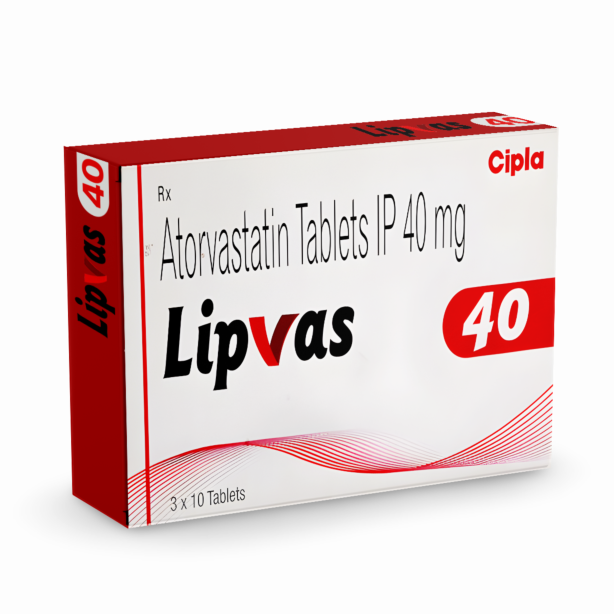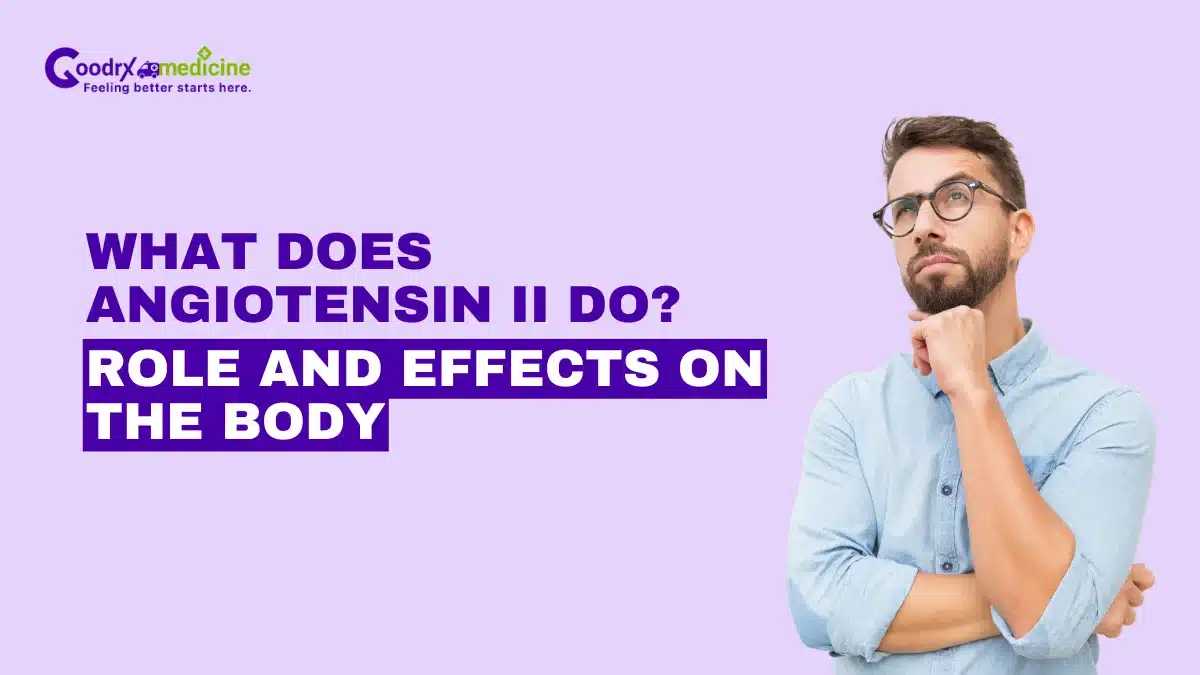The human body relies on a complex network of chemical messengers to maintain balance and proper function. One such powerful substance is Angiotensin II, a hormone-like molecule that plays an important role in controlling blood pressure, fluid levels, and electrolyte balance.
Though small in size, Angiotensin II has a massive impact on your cardiovascular system and overall health. Its actions are swift, targeted, and needed for survival, especially during times of stress or fluid loss.
In this article, we will read what does Angiotensin II do, how it works within the Renin-Angiotensin System (RAS), and why it is important.
What is Angiotensin II?
Angiotensin II is a peptide hormone made up of eight amino acids. It is part of a larger system known as the Renin-Angiotensin-Aldosterone System (RAAS), which helps control blood pressure, fluid levels, and salt balance in the body.
Angiotensin II is not stored in the body but is produced as needed through a chain reaction starting from a protein called angiotensinogen, which is made by the liver.
Also, Angiotensin II helps develop and progress Hypertension (High Blood Pressure) by narrowing the vessels and by increasing fluid retention, both of which raise blood pressure levels.
Save up to 90% on your medicine bills

Eliquis 2.5 Mg

Crestor 40 Mg

Lipvas 40 mg

Arkamin 100 Mcg
How is Angiotensin II formed?
The creation of Angiotensin II follows a three-step process:
Release of renin: When your blood pressure drops, the kidneys release an enzyme called renin.
Formation of Angiotensin I: Renin acts on angiotensinogen (a protein in the blood) and converts it into Angiotensin I, which is inactive.
Activation by ACE: Angiotensin I is converted into Angiotensin II by the Angiotensin-Converting Enzyme (ACE), mainly found in the lungs.
Once Angiotensin II is formed, it begins its work by binding to receptors in various organs and tissues.
What does Angiotensin II do in the body?
Angiotensin II performs several critical functions in the body, especially when it comes to maintaining cardiovascular stability. These include:
Increases blood pressure
Angiotensin II is a strong vasoconstrictor, meaning it narrows the blood vessels. This narrowing increases resistance in the blood vessels, causing blood pressure to rise. This is especially important during blood loss, dehydration, or Low Blood Pressure conditions, as it helps maintain blood flow to vital organs.
Diabetes-related complications
In people with Diabetes, Angiotensin II contributes to kidney and cardiovascular complications. Blocking its action is a common approach in treating diabetic nephropathy (kidney damage due to Diabetes).
Stimulates Aldosterone secretion
Angiotensin II signals the adrenal glands (located above the kidneys) to release Aldosterone. Aldosterone is a hormone that makes the kidneys retain sodium and water, which increases blood pressure and volume. At the same time, it promotes the excretion of potassium.
Triggers the release of ADH (Vasopressin)
Angiotensin II also promotes the release of Antidiuretic Hormone (ADH) from the pituitary gland. ADH helps the kidneys conserve water by reducing urine output. This further supports an increase in blood volume and pressure.
Promotes thirst and salt appetite
To support fluid retention, Angiotensin II stimulates areas in the brain that trigger thirst and a craving for salt. This encourages you to drink more water and eat salty foods, helping restore normal fluid and electrolyte levels.
Regulates kidney function
In the kidneys, Angiotensin II narrows the blood vessels in a way that helps maintain the filtration rate even when overall blood pressure is low. This helps the body continue removing waste while preserving essential substances.
Promotes inflammation and cell growth
Besides its immediate effects on blood pressure and fluid balance, Angiotensin II can also influence long-term changes. It promotes inflammation and thickening of blood vessel walls, which can lead to organ damage in chronic conditions like hypertension, heart failure, or kidney disease.
What do Angiotensin II receptors do?
Angiotensin II carries out its actions by binding to specific receptors:
- AT1 receptors: These are responsible for most of Angiotensin II’s known effects, including vasoconstriction, aldosterone release, increased blood pressure, and more.
- AT2 receptors: These have a counter-regulatory role. They may help reduce inflammation, promote blood vessel relaxation, and support tissue repair.
In adults, the AT1 receptor dominates, especially during conditions like stress or illness. However, ongoing research is exploring how stimulating AT2 receptors might help treat certain diseases.
How to block Angiotensin II ?
Modern medicine has developed several classes of medicines that work by blocking Angiotensin II or its effects:
ACE Inhibitors (e.g., Enalapril, Lisinopril): The ACE inhibitors are used to stop the conversion of Angiotensin I to Angiotensin II by reducing blood pressure and easing strain on the heart and kidneys.
Angiotensin Receptor Blockers (ARBs) (e.g., Losartan, Valsartan): These block the AT1 receptors, preventing Angiotensin II from binding and causing its usual effects.
Direct Renin Inhibitors (e.g., Aliskiren): These block the entire cascade at its beginning by inhibiting renin.
The body maintains a balance of Angiotensin II. It is only produced when needed and quickly broken down by enzymes like angiotensinase once the job is done. However, chronic stress, a high-sodium diet, lack of exercise, or genetic factors can disturb this balance and lead to health problems.
Conclusion
Angiotensin II is an important part of the body’s regulatory system, especially when it comes to maintaining stable blood pressure, fluid levels, and electrolyte balance.
It acts quickly in response to situations like dehydration, blood loss, or Low Blood Pressure, helping to preserve blood flow to important organs. However, when this hormone remains overactive for extended periods, it can cause more harm than good.
Long-term elevation of Angiotensin II is closely linked to health issues such as Hypertension, heart failure, stroke, and kidney disease. That is why modern treatments like ACE inhibitors, ARBs, and direct renin inhibitors help rebalance this system and prevent Angiotensin II from causing long-term damage.
Understanding what does Angiotensin II do is key to taking control of your health.

Frequently Asked Questions
What does Angiotensin II do postpartum?
Postpartum, Angiotensin II helps restore blood pressure and fluid balance after childbirth. Its levels remain elevated briefly to support vascular tone and organ perfusion. However, excessive Angiotensin II activity may contribute to postpartum Hypertension complications, requiring medical monitoring.
What does Angiotensin II do to lungs?
Angiotensin II affects the lungs by constricting pulmonary blood vessels and increasing vascular resistance. It also promotes inflammation and fibrosis. These effects may worsen conditions like Pulmonary Hypertension or Acute Respiratory Distress Syndrome (ARDS), especially in infections or lung injury, contributing to breathing difficulties and impaired oxygen exchange.
Is Angiotensin II linked to COVID-19?
Yes, early research suggested that Angiotensin II may play a role in COVID-19 severity. The virus binds to ACE2 receptors, which regulate Angiotensin II breakdown. This imbalance may contribute to lung inflammation and damage in severe cases.
Can Angiotensin II levels be tested?
Yes, Angiotensin II levels can be measured through blood tests, but it’s not commonly done in routine clinical settings. Testing is usually reserved for research or complex cases where hormone regulation needs close examination.
When referencing outside resources, GoodrxMedicine always provides full citations. To learn more about the measures we use to maintain the quality of our content, please review our Content Information Policy.











